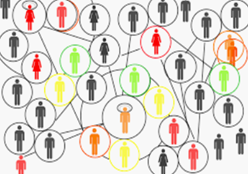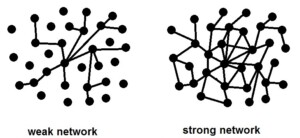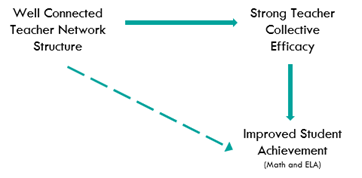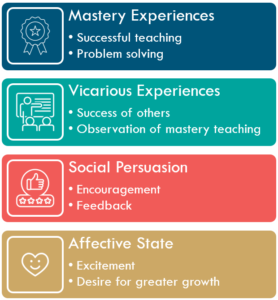UNPACKING COLLABORATION AND SOCIAL NETWORKS
“Success lies in the critical nature of collaboration and the strength of believing that together, administrators, faculty, and students can accomplish great things. This is the power of collective efficacy.”
(Donohoo et al., 2018)
Creating opportunities for school staff to develop social networks and providing structures to support teacher collaboration are important and necessary steps to building CTE in schools.
A Social Network is “network of individuals (e.g. friends, acquaintances, coworkers) connected by interpersonal relationships” (Merriam-Webster, 2019).

Collaboration means “working jointly with others” (Merriam-Webster, 2019).

Watch the video The Power of Collaboration (Tedx Talks, 2014)which describes five essential lessons for collaboration.
The Power of Collaboration (6:29 min.)
Reflection Questions
- Which of the five lessons stand out most to you?
- How might these lessons describe educator collaboration?
- Examine the social networks and collaboration that are currently happening in your school/district.
- Are you a member of any social networks?
- What social networks are already established in your school/district?
- What structures in your school encourage collaboration?
- Do all teachers in your school have frequent opportunities to collaborate with other educators?
Social Networks
Teachers invest in and profit from their social connections. Through social networks, teachers are connected to both knowledge and resources. Moolenaar et al. (2012) conducted a large-scale study to examine the relationship of teacher’s collaborative networks, collective efficacy, and student achievement. The researchers found that schools with well connected, dense networks (many relationships) tended to have higher levels of collective efficacy and improved student achievement.

Denser social networks support and nurture teachers’ confidence in the capacity of their team to have an impact on student learning and school goals. Teachers with many ties tended to be more willing to take risks and engage in more continuous learning. In schools with weaker social networks, teachers tended to share and learn less with each other (Moolenaar et al., 2012). This finding corroborated earlier studies that highlighted the impact of densely connected teacher teams to increased teacher trust, an innovative school climate, and the implementation of reform activities (Coburn & Russell, 2008). The social environment that results from the development of teachers’ interdependence allows for the exchange of advice and ideas across the school (Daly, 2010).
Social Networks Impact Student Achievement

(Moolenaar, Sleegers, & Daly, 2012)
Building Efficacy Through Teachers’ Social Networks
Strong social networks and collaboration provide a context for the development of CTE.

Read the article Open Your Door: Why We Need to See Each Other Teach (Daly, 2010). What did you learn about the importance and power of teacher observation from this article?
Social networks and collaboration in a school/district connect teachers to one another and provide an opportunity for colleagues to work together to increase student learning and achievement. When teachers share information, resources, ideas, and expertise, teaching tends to be more accessible and effective for all students.
Benefits of Teacher Collaboration (Davis, 2020)
- Increased Academic Effort – When teachers collaborate on instruction, it increases the level of academic rigor.
- Increased Understanding of Student Data – Together teachers are better equipped to dig into relevant data and implement more effective solutions. There is also a shared sense of responsibility for student outcomes.
- More Creative Lesson Plans – When teachers share ideas, they can pull from a larger repertoire of instructional strategies.
- Less Teacher Isolation – The opportunity to share ideas and information combats professional loneliness and frustration, which improves staff morale and professional satisfaction.
Reflective Questions
- How do social networks and collaboration work in tandem?
- What are the benefits of increasing teacher social networks and improving opportunities for collaboration?
- How might denser social networks be created among teachers in your school/district?
- Does your school/district allocate frequent time for scheduled teacher collaboration?
- How might collaboration time be increased and enhanced?
Coaching Companion
Blog Post. Heick, T. (2012, August 21). Starting a new school year: Nine tips for collaboration. Edutopia. Retrieved from https://www.edutopia.org/blog/proactive-strategies-collaborate-early-often-terrell-heick

